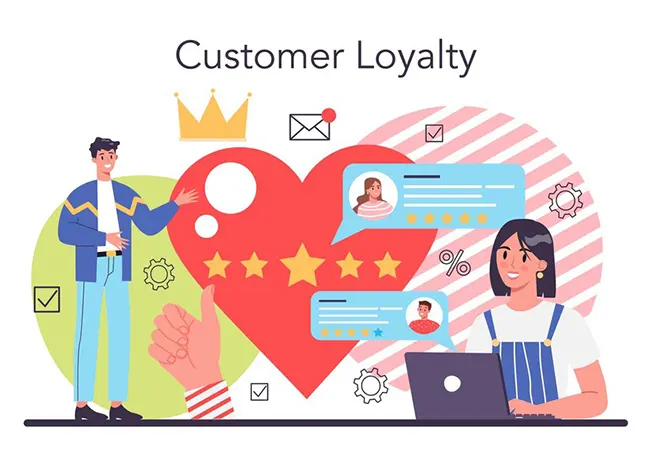Personalization as a Driver of Customer Loyalty

Personalization has become a cornerstone of customer experience (CX), with tailored interactions driving loyalty and revenue. As customers demand seamless, relevant experiences, businesses are leveraging AI, call intent analysis, and agent empowerment to meet these expectations. This article explores how personalization fosters loyalty, drawing insights from industry experts on technology, metrics, and generational preferences.
The Demand for Personalization
Patrick Martin from Coveo, in “The Personalization Imperative,” states that 81% of customers prefer companies offering tailored experiences. AI analyzes customer data to deliver real-time recommendations, transforming search into a proactive guide. Xero’s integration of generative answering technology, for instance, provided contextual answers, increasing self-service resolution by 20% and boosting loyalty.
Michael Wiesblatt from Genesys, in “Are Customers (and Agents) Truly Different?”, reinforces this, noting that 73% of consumers buy more from brands with high personalization. Across generations, knowledgeable agents and first contact resolution (FCR) are valued, with 88% of Baby Boomers prioritizing FCR. This universal demand underscores personalization’s role in retaining customers, especially as 30% stop purchasing after a bad service experience.
Leveraging Call Intent for Tailored Experiences
Joe O’Brien from Sabio Group, in “Decoding Customer Desires,” highlights call intent analysis as a tool for understanding customer needs across channels. AI identifies underlying emotions and expectations, enabling personalized responses. A major airline’s intent analysis uncovered unexpected customer needs, saving £2.2 million and reducing contact center workload by 22%. By tailoring interactions based on intent, businesses enhance satisfaction and loyalty.
Nicholas Clapper from Cloudli, in “How to Deliver Excellent CXs,” emphasizes the “Big Four” elements—speed, convenience, knowledgeable help, and friendly service. Skills-based routing, powered by intent data, ensures customers reach agents equipped to address their specific needs, fostering trust. Clapper’s focus on streamlined solutions for SMBs aligns with O’Brien’s call for data-driven personalization, ensuring relevance without complexity.
Empowering Agents with Technology
Personalization extends to agent interactions. Wiesblatt notes that AI tools providing real-time customer data empower agents to deliver tailored solutions, improving FCR and satisfaction. The Seattle Times, in “Extra! Extra! Advanced Tech Helps Newspaper!”, upgraded to Enghouse’s cloud solution, enabling real-time coaching and automation. This reduced hold times and complaints, enhancing agent ability to offer friendly, personalized service.
Pablo Sanchez from Atento, in “The Journey to the New World of AI,” describes AI’s role in agent support. Their AI Center of Excellence integrated AI into CRM, improving customer satisfaction by 22% and team productivity by 30%. By acting as a “co-pilot,” AI enables agents to focus on empathy, a critical component of personalization, as Clapper’s emphasis on friendly service suggests.
Measuring Personalization’s Impact
Manu Parhar from Webex by Cisco, in “11 Most Valuable Metrics,” identifies customer satisfaction (CSAT) and net promoter score (NPS) as key metrics for evaluating personalization. CSAT quantifies interaction quality, while NPS measures long-term loyalty, with promoters (scores 9-10) likely to recommend the brand. Parhar’s analytics dashboards provide real-time insights, enabling businesses to refine personalization strategies.
Shane Devitt, in “The CX Buzzword Hall of Shame,” warns against overhyping terms like “customer-centric,” noting that true personalization requires action, not marketing fluff. Parhar’s emphasis on feedback loops aligns with this, as post-call surveys reveal areas for improvement. Xero’s success, as Martin describes, demonstrates how metrics-driven personalization enhances loyalty, with 96% of customers self-serving successfully.
Challenges and Opportunities
Personalization faces challenges, as Devitt notes, with terms like “seamless” often masking integration issues. Customers repeating themselves across channels erodes trust, a concern Wiesblatt addresses by advocating for smarter self-service options. Current chatbots, rated low across generations, must evolve to handle complex queries, as Sanchez’s vision of AI-driven virtual concierges suggests.
Jessica Petrie and Jim Katzman, in “If/When Cuts Hit the Call Center…,” highlight the risk of over-relying on automation, especially in government services. As private sector contact centers absorb increased volumes, personalization becomes critical to manage emotionally charged inquiries. Training agents in empathy, as Clapper and The Seattle Times emphasize, ensures personalized experiences that build loyalty.
The Path to Loyalty
Personalization is a strategic imperative for fostering customer loyalty. By leveraging call intent analysis, empowering agents with AI, and tracking metrics like CSAT and NPS, businesses can deliver tailored experiences that resonate across generations. As Martin, Wiesblatt, and Sanchez suggest, the future lies in smarter AI and omnichannel support, while Clapper’s focus on simplicity ensures SMBs can compete. By overcoming integration challenges and balancing automation with empathy, contact centers can transform interactions into lasting relationships.


